Which Flights Are the Least Likely to Be Delayed?

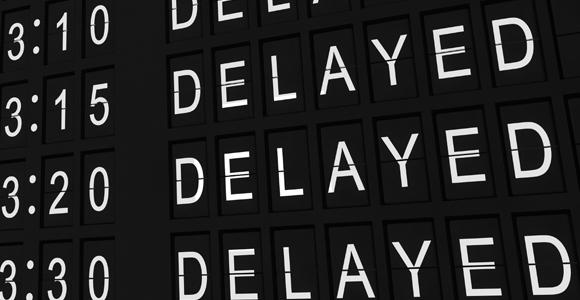
Website analysis shows that the later the departure time, the greater the average flight delay
To arrive on time, it pays to leave early, suggests analysis by Decision Science News.
The data science website evaluated information provided by the Bureau of Transportation Statistics to predict how departure times impact delays experienced throughout the day.
The graph below was created by analyzing every flight in the United States for 2013 for which there was data. Next, flights that departed between midnight and 6 a.m. were filtered out, leaving just over 6 million for evaluation.
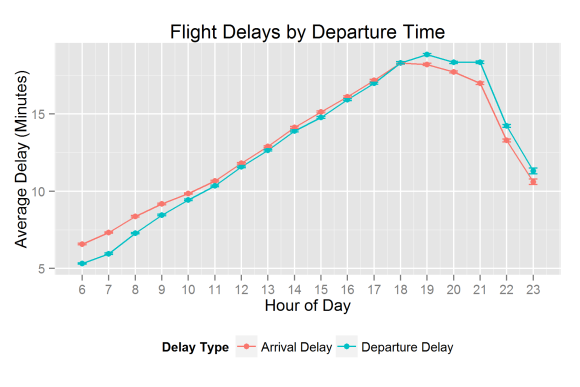
The trend is clear: a later departure means a longer delay. That is, however, until 6 p.m. when delay times plateau and 10 p.m., when they drop.
One of the causes of delays is waiting for planes to arrive from another city, so delays increase as the day goes on. The first flights out in the morning, of course, aren’t subject to this problem.
While approximately 60 percent of flights weren’t delayed and an average 20-minute wait during the busiest window doesn’t seem bad, things can get worse for a small minority of flyers. For those at the extreme end of the delay spectrum, the data analyzed by Decision Science News gives a 1 in 20 chance that departure could be pushed back by an hour and a half or more while a quarter of delayed passengers may face waits of more than 20 minutes.
The website’s analysis also examined the nation’s ten favorite airports as determined by passenger traffic. It’s possible the results are affected by weather, flights, longitude, etc:
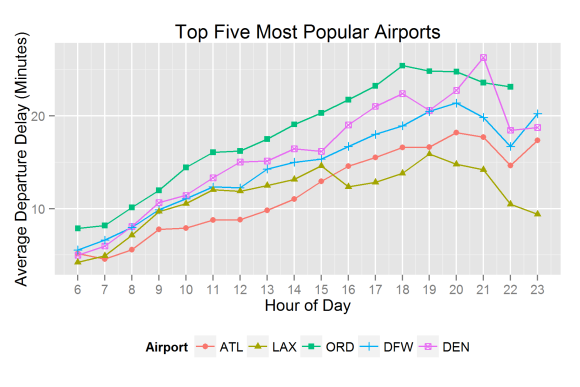
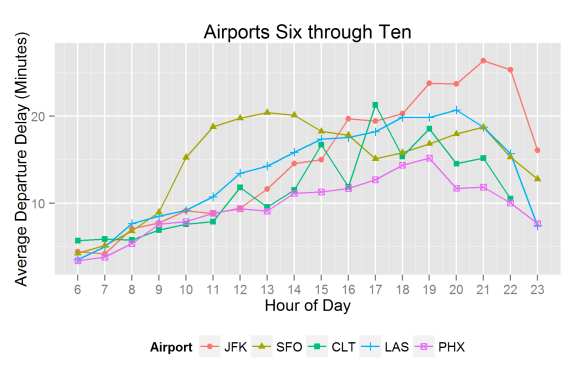
Decision Science News also examined daily patterns over a period of months, which took into account the median – rather than average – delay. Unlike the daily departure/delay patterns, these results are attributable to random events that change over time:
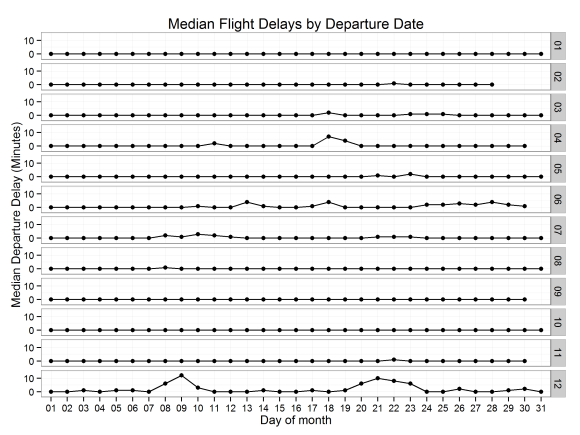
The only clear message? An early flight could be the ticket to a punctual arrival.
[Photo: iStock]






















When will authors start plotting the average together with the standard deviation or another measure of dispersion? Without these, the graphics shown in this article are mostly meaningless.
No breakdown by airline? I don't know if this is still the case, but certainly back when this data was collected in 2013, Southwest seemed even more vultnerable to late-in-the-day major flight delays because they tried to do turns too fast and kept flying the same planes on short hops all day. (Legacy airlines typically allow longer turns and/or fly longer hops on average, especially with their mainline planes.)
There's a typo in 3rd paragraph? "Next, flights that departed between midnight and 6 p.m. were filtered out" should be 6:00 am?